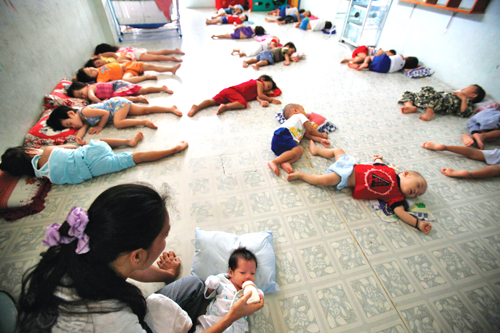How to Live With an HIV-Positive Person

Live With an HIV-Positive Person
Living with an HIV-positive person is no more risky than having an HIV-negative roommate, according to researchers at The Body: The Complete HIV Resource. There is almost no risk of transmitting the virus from one household member to another through casual contact. Communication and education are the keys to a positive living situation. The following tips can help you learn to live with an HIV-positive partner.
-
1
Communicate openly about the situation. Get all of your concerns and questions out into the open before signing the lease. Be honest and non-judgmental when discussing your roommate's status and your risk of infection.
-
2
Don't be afraid to share. You will not get HIV by using the same bathroom, eating from the same fork, drinking from the same container or sharing the same foods. These myths are fueled by misinformation and fear. Your daily routine doesn't have to change based on your roommate's status.
-
3
Know the facts about getting HIV. Transmission only occurs through the exchange of blood, semen, breast milk and vaginal fluid. Casual contact like hugging and sitting together on the couch are not ways you can get HIV. Don't be afraid to touch your roommate.
-
4
Set ground rules. If you're uncomfortable with your roommate using one of your personal items, say so. Your roommate may also have his own ideas about boundaries and personal property. These apply to all roommate situations, but can be especially helpful when one party is HIV-positive.
-
5
Respect your roommate's privacy. This means not discussing his HIV-positive status with your visitors. If it's already known that your roommate is positive, educate your friends and family about how HIV is transmitted and explain to them they they are not at risk by spending time in your home.
Let's begin by saying that there's no way for a sexually active person to be 100 percent "sure" that s/he is safe from HIV. But, there are many ways to make one's risk low, or even negligible, even for an HIV-negative person in a relationship with someone who is HIV-positive.
Several studies have been done on relationships similar to yours, where one partner is HIV-positive and the other negative (a.k.a., mixed status or HIV-discordant couples). A study published in 1994 in The New England Journal of Medicine looked at 256 heterosexual mixed status couples. Of the 124 couples that consistently used condoms, none of the HIV-negative partners were infected. Among the 121 couples that did not consistently use condoms, 12 (about 10 percent) of the HIV-negative partners became infected. Additional studies found similar results.
Consistent and correct condom usage is the key to lowering the risk of HIV transmission in mixed status couples, whatever their sexuality. Condoms are highly effective in preventing the transmission of HIV, but sometimes fail. Those failures are most often due to incorrect usage or user error. To reduce condom failure:
- Use water-based lubes, never oil-based ones such as petroleum jelly, cooking oil or shortening, or hand-lotion — they can weaken the latex.
- Keep condoms away from heat or direct sunlight.
- Check the expiration dates printed on the package. Condoms that are too old or expired, or have packaging that appears to be weathered or deflated, need to be thrown away.
- Carefully open the condom with your fingers, trying not to tear it with your fingernails (or teeth).
The studies mentioned above dealt with condom usage for vaginal and anal intercourse, not oral sex. Read HIV transmission from receiving oral sex? in Alice's Sexual Health archive to help decide what kind of steps you and your partner can take to reduce your risk during oral sex.
Relationships pose challenges, and being in one with an HIV-positive partner poses unique issues beyond safer sex that you might not have had to think about in your previous relationships. It may be interesting to take a look at
The Couples Project, an initiative from the Center for Clinical and Behavioral Studies at the New York State Psychiatric Institute, where you'll find articles, FAQs, and a question and answer forum for mixed status couples.


















